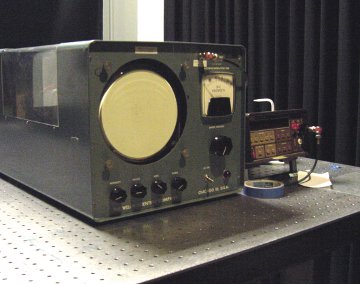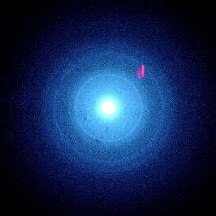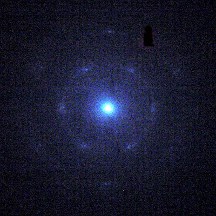Electron Diffraction



Students use a Seargent-Welch electron diffraction apparatus to study electron diffraction from graphite and a randomly oriented metal target.
Experiment Information
Discussion Questions
- The diffraction condition in a lattice may be expressed as
H⋅T = integer, where the vector
H = n/d, with n as the unit normal to the set of
Bragg planes and d the spacing between them, and T is a translation
vector in the lattice. For a simple cubic lattice, the translation vector is a linear
combination of a1 = [a,0,0],
a2 = [0,a,0], and
a3 = [0,0,a], so that
T = a[px,py,pz], where
pi is an integer. Show that the vector
H = [h,k,l]/a with
d2 = a2/(h2 + k2 + l2)
satisfies H⋅T = integer in a simple cubic lattice for all
integers h,k,l, with the vector [h,k,l] perpendicular to the Bragg
plane.
- For the face-centered cubic (fcc) lattice, the translation vectors T are
linear combinations of a1 = (a/2)[0,1,1],
a2 = (a/2)[1,0,1],
a3 = (a/2)[1,1,0]. Show that the condition
H⋅T = integer leads to the requirement that h,k,l
be either all even or all odd.
- Generate the ratio of the largest value of (dhkl/a) to
the next 10 largest values of the same quantity for graphite and the three cubic
lattices (all hkl for simple cubic, hkl all even or all odd for fcc and
the sum h+k+l is even for bcc). Use this for your analysis in
Part 2. (Hint: use a spreadsheet.)
- In this experiment, you are basically finding a relationship between accelerating potential V and the ratio of the electron wavelength λ to the lattice parameter d. Can you use this apparatus to extract λ, the d value for aluminum and the d value for graphite without knowing one of them a priori? If so, how might you do this? If not, how might you alter the experiment and/or use other easily measured information to do so?